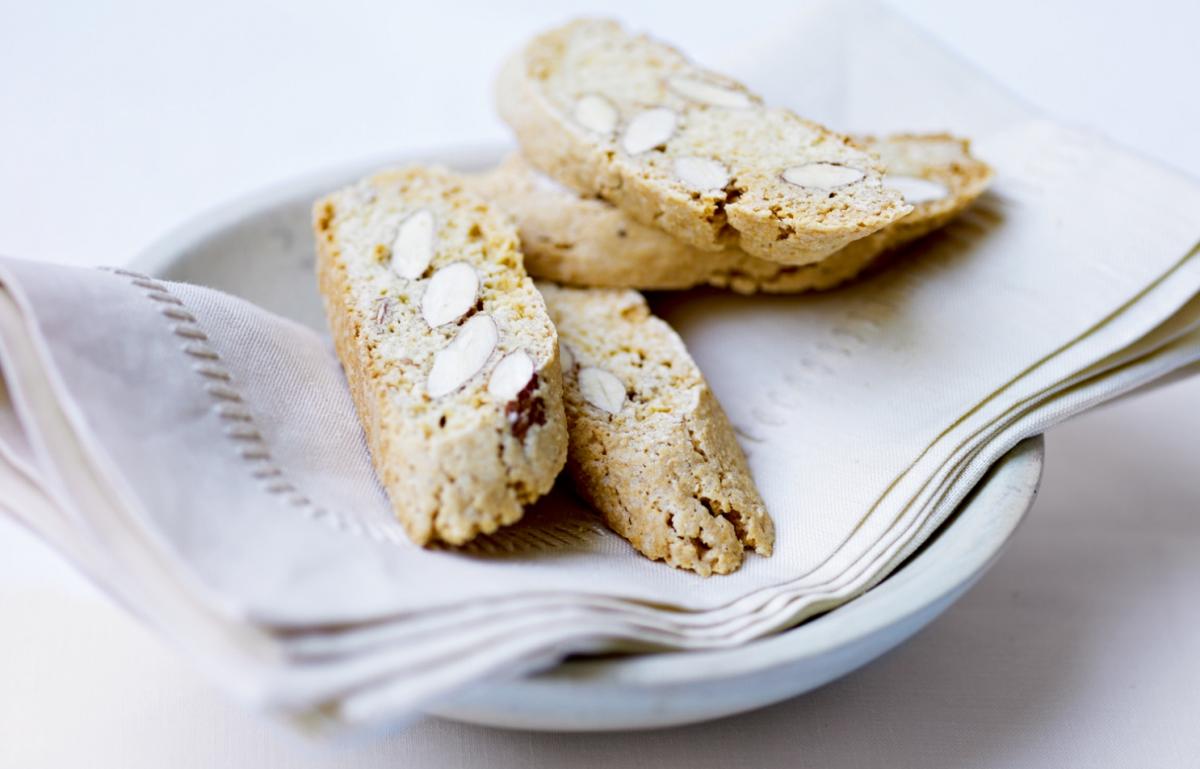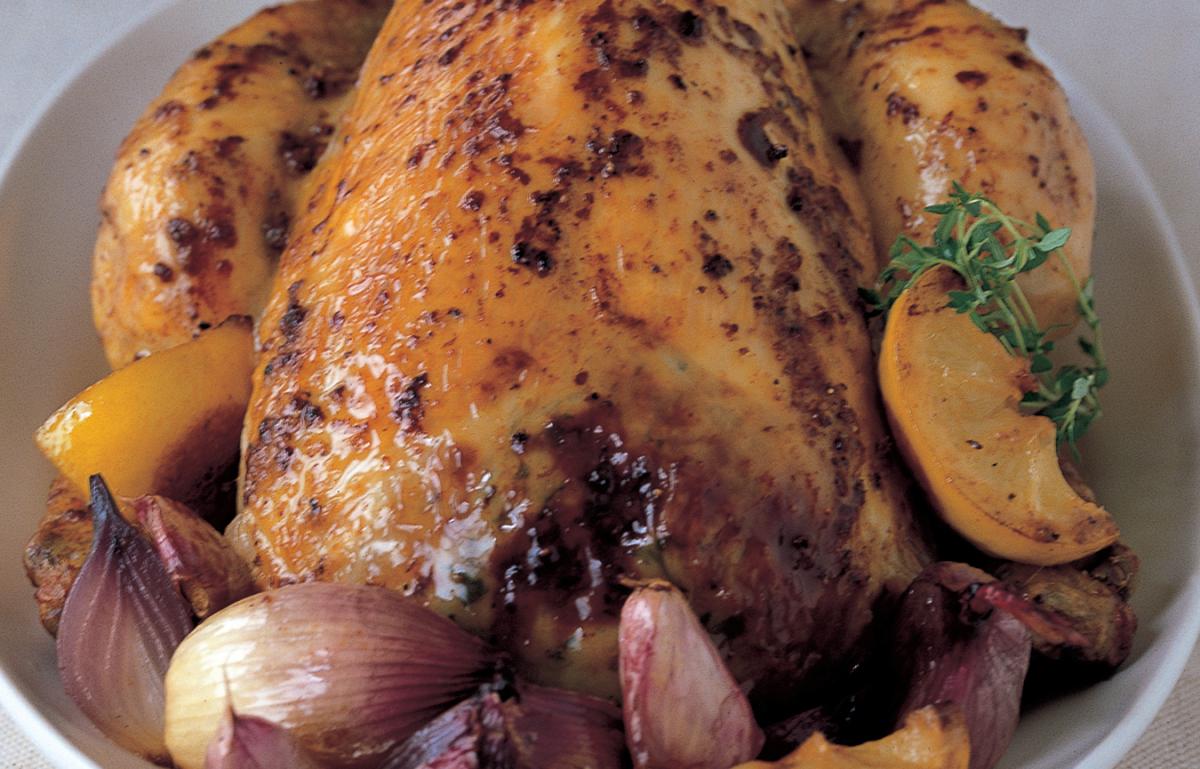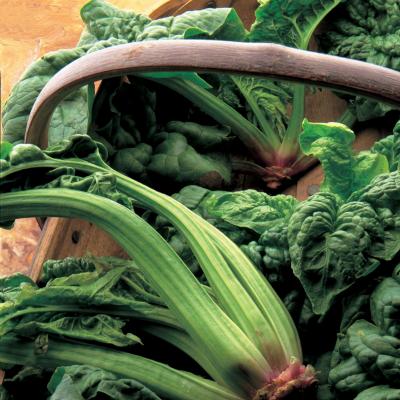


Home-grown, best from April to October
Very green and very good for you, spinach is packed with vitamin C. What you need to be most aware of is that spinach contains a great deal of water, so what looks like a huge amount won't be when it's cooked.
To prepare spinach: Fresh spinach can be rather dusty or muddy. The best way to deal with this is to pick out and discard any damaged or brown leaves and remove any tough stalks, fill the sink with cold water, then plunge the spinach in the water and swirl the leaves around. Do this in two or three changes of water, then let it all drain in a colander, shaking it well over the sink. Young spinach leaves can be wiped and used raw in a delicious salad.
To cook spinach: Absolutely no water ever. For 1 lb (450 g) of spinach leaves, melt ½ oz (10 g) of butter in a large, thick-based saucepan, then keeping the heat at medium, pack the spinach leaves in. Add some salt, put on a tight-fitting lid and let it cook for about 30 seconds, then take the lid off and you'll find the spinach has collapsed down into the butter. Give it a stir, so that the top leaves get pushed down to the base of the pan, replace the lid and give it another 30 seconds or so, shaking the pan a couple of times. I find the whole operation takes less than 2 minutes.
Next, drain the spinach in a colander, pressing it well with a saucer to get rid of any excess water. You can now return it to the pan and add seasoning: spinach is enhanced beautifully with a little cream or crème fraîche. It also, like cauliflower, has an affinity with nutmeg, so season with salt and freshly milled black pepper and a few gratings of whole nutmeg.
Spinach as a vegetable goes beautifully with smoked haddock. If you're serving spinach as a vegetable you will need 8 oz (225 g) per person.
Follow us Like us on Facebook Follow us on twitter Follow us on instagram Follow us on pinterest Follow us on youtube
© 2001-2024 All Rights Reserved Delia Online